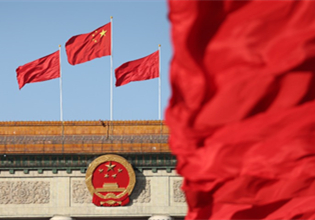Water project brings riches to desert area
"Because of the water shortage, we were unable to raise many cows. Now that there is plenty of grass and water, the animals can easily find food to fill their stomachs. Cow herding has become a lot easier," Naranmandakh said, adding he plans to increase his cattle to 1,000 from the current 600.
According to Elion Resources Group, which has been promoting sand control in the Kubuqi for over 30 years, the vegetation coverage rate in the desert has increased from less than 3 percent to 53 percent.
It said there have been 20 species of plants growing in the wetland generated by the water diversion project, and the area now serves as a habitat for 10 species of birds.
While cow raising has greatly increased the incomes of over 30 households, local people are eying more opportunities brought by the project to lead wealthier lives.
Naranmandakh, for example, has tried aquatic farming and running a rural resort.
He also started to raise crabs in 2018.
Though many of the crabs escaped because of a sudden rise in the water level, he still profited as the price of his crabs reached over 50 yuan per kilogram when he sold them around the Mid-Autumn Festival, a time many Chinese people think is the best to eat crabs, he said.
He plans to farm crayfish while expanding crab raising.
"It should be no big problem for me to make over 1 million yuan a year from raising cows and crabs," he smiled.
In 2016, Hanggin invested over 40 million yuan ($5.6 million) to build a 38.5-kilometer channel to direct water from the Yellow River into the Kubuqi during the winter.
The project has helped generate a 20-square-kilometer body of water and create a wetland of 60 square kilometers, according to the local government.



 Print
Print Mail
Mail





